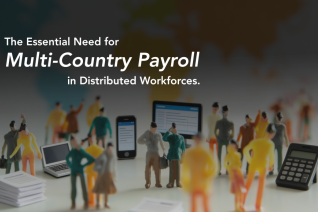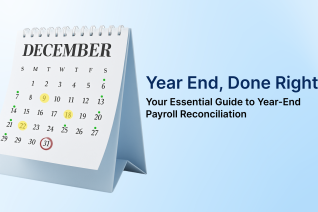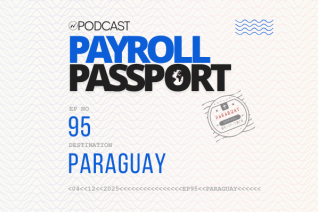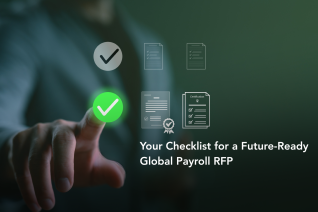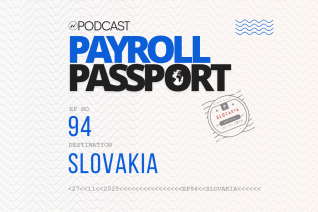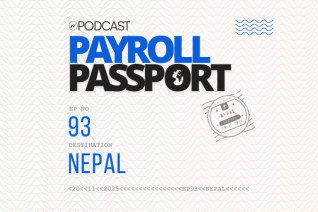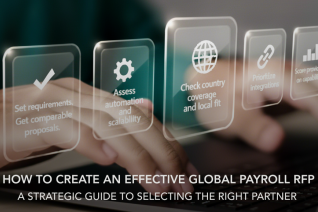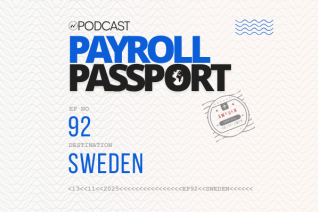Why Global Payroll Needs a Unified Platform with Built-In Country Engines
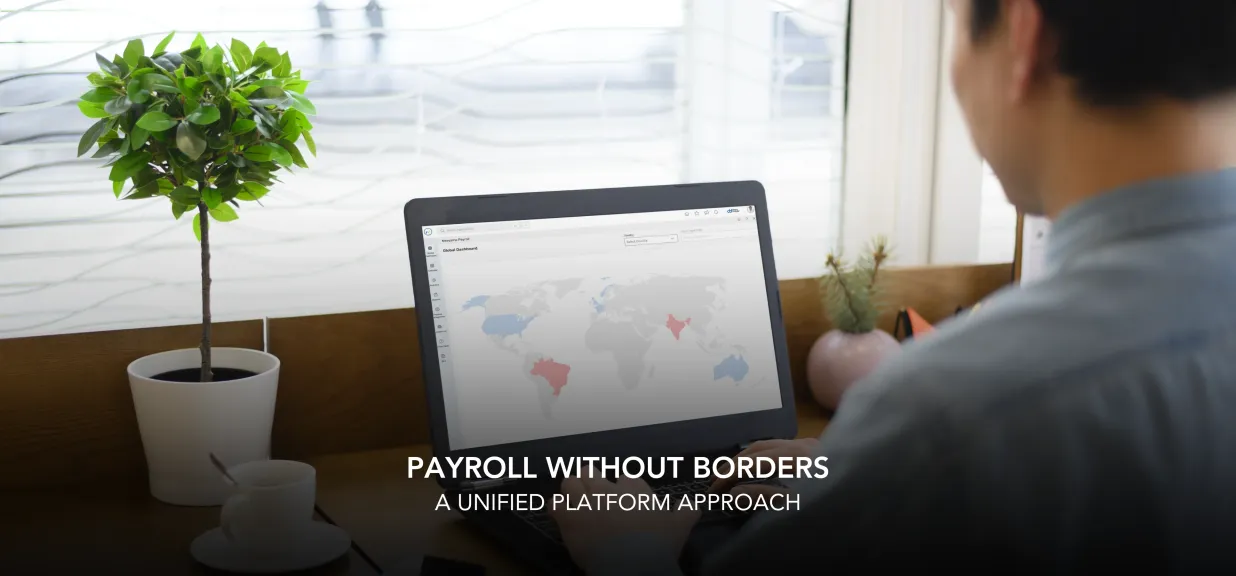
Today’s global businesses face a payroll landscape more complex than ever. According to PwC’s 2025 Global Compliance Survey, 85% of organizations report that compliance requirements have grown significantly more complicated in just the past three years. Between constantly evolving tax laws, multi-currency payment challenges, disparate labor regulations, and fragmented payroll systems, companies are struggling to keep up without errors, penalties, or inefficiencies.
Global payroll is a complex minefield. Ask a Global Payroll director managing payroll across 50 countries with 28 different vendors and HR teams in 32 locations, and he/she will probably agree that this means constant firefighting! Brazil updates its tax requirements quarterly, Argentina's volatile peso requires monthly salary adjustments, and even at times, Dubai's strict WPS payment system can lead to significant delays in turnover.
"A truly global payroll engine isn’t just about processing pay, it’s about embedding compliance intelligence into every transaction. Without localization at the core, businesses are left exposed to regulatory risks and operational blind spots."
Relying on manual processes or a patchwork of local vendors only magnifies these risks, resulting in delays, compliance gaps, and inconsistent employee experiences. The solution? A unified global payroll platform with built-in country-specific compliance engines, ensuring accuracy, agility, and real-time visibility no matter where your teams are located.
Let’s explore why this approach is now a competitive necessity for scaling businesses.
The Evolution of Global Payroll: From Fragmented to Unified
Global payroll typically meant juggling a patchwork of local vendors, spreadsheets, manual reconciliations, and regional aggregators who offered some degree of consolidation. The focus was on coverage aggregators that dominated, handling input from various sources but often falling short in terms of true integration. As organizational needs became more complex, limitations became clear:
- Siloed data: Inconsistent formats and duplicate entries made global oversight nearly impossible.
- Compliance gaps: Aggregators struggled to keep pace with constant regulatory changes in every jurisdiction.
- Data security & privacy risks: Legacy systems often lack safeguards for GDPR, CCPA, and local data laws
- Workflow inefficiency: Manual processes and hand-offs created lag and errors.
- Poor employee experience: Delays and confusion eroded trust within the workforce.
As technology advanced, the market shifted. Unified, tech-driven platforms began to outpace traditional aggregators, marking a shift that has become today’s new standard.
ALSO READ | What Does the Future of Global Payroll Look Like in a Borderless World?
The Demand for a Unified View Across All Countries
Modern multinational organizations are under increasing pressure to achieve centralized visibility and control over payroll operations in every country where they operate. A truly unified view provides strategic clarity: HR, finance, and leadership teams can access real-time payroll data, compliance status, and cost analytics from a single source, regardless of local nuances. This holistic oversight:
- Reduces the risk of errors and non-compliance by eliminating data silos.
- Speeds up decision-making with consolidated reporting and analytics.
- Enhances governance, as leaders can spot inefficiencies and address anomalies across all markets.
- Improves scalability by enabling the swift onboarding of new countries or business entities through standardized processes and controls.
This demand for unification is driving the shift from fragmented, local systems to global payroll engines designed to centralize, harmonize, and contextualize information across borders.
Take a Closer Look at Neeyamo’s Global Payroll Demo to understand more.
Strategic Financial Impact: The CFO’s Perspective
As payroll increasingly intersects with finance, CFOs are recognizing its value beyond just compliance and disbursement. Unified payroll systems don’t just streamline operations; they provide the real-time data needed for accurate financial forecasting and strategic planning.
- Real-time payroll analytics at a global level empower finance teams to track labor costs across entities, functions, and markets.
- Cost allocation and accrual planning become more precise, reducing the margin for error in closing books and planning budgets.
- Workforce budgeting and scenario modeling are enhanced by having structured, country-level data readily available.
“CFOs increasingly rely on real-time payroll analytics for cost allocation, accrual planning, and workforce budgeting.”
A unified platform turns payroll into a strategic lever, bridging HR and finance, improving transparency, and enabling agile decision-making at the executive level.
Key Challenges of Legacy Global Payroll
a. Fragmented Systems
Processing payroll via multiple vendors across countries breeds inconsistency and makes standardization a constant uphill battle.
b. Compliance Risks
Keeping in step with rapidly changing local labor laws, often in languages and frameworks foreign to the core team, is a monumental task. Missed updates can result in hefty penalties.
c. Lack of Real-Time Data
Aggregated models typically deliver data with a lag, which can hinder agile decision-making for HR and finance leaders.
d. High Operational Costs
While the price-per-employee-per-month (PEPM) is often scrutinized, the hidden, recurring costs of gathering, validating, and reconciling payroll inputs far outweigh the visible line items.
e. Operational Overhead
The time and human resources spent maintaining compliance, inputting data across interfaces, and resolving inconsistencies can dwarf any supposed savings from a low-cost vendor patchwork.
Building Blocks of an Intelligent Global Payroll Engine
To deliver a unified and compliant payroll experience globally, a modern engine should combine advanced architecture, configurability, and domain expertise. Here’s how the best-in-class platforms deliver on these demands:
1. Stateless, Scalable Gross-to-Net Engines
- Stateless design ensures that every payroll calculation is processed independently, without reliance on the history or state of other transactions, enabling rapid, reliable, and repeatable results.
- Scalability is crucial for multinationals handling payroll for thousands of employees across dozens of countries, supporting spikes in activity and seamless expansion.
- These engines manage complex gross-to-net computations for diverse payroll calendars, frequencies, and pay elements, all in real-time and at scale.
2. Configurability at Global, Country, and Entity Levels
- The platform should enable global policies (such as standard cut-off dates or global pay codes) while supporting country-specific rules (tax brackets, benefits, and deductions) and entity-level nuances (legal requirements per subsidiary).
- This multi-tiered configurability enables organizations to maintain consistency where possible, while localizing where required, thereby streamlining implementation, updates, and compliance with every jurisdiction.
3. Built-In Regulatory Intelligence
- Embedded statutory knowledge, continually updated, empowers the engine to reflect legal changes automatically, calculate taxes and social contributions, and deliver mandatory reports without manual intervention.
- This regulatory intelligence reduces compliance risks, relieves pressure on local teams, and strengthens global control mechanisms.
- True transformation comes from automation: maintaining compliance isn’t a reactive task, but a proactive, always-on feature of the platform.
4. Native Payroll Engines for Real-Time Local Compliance
- Unlike “one size fits all” aggregators, native engines are purpose-built for each country, incorporating that nation’s unique payroll logic, legislative rules, and data outputs.
- They instantly adapt to in-market changes (such as new taxes and statutory reporting) and generate compliant payslips, reports, and filings without requiring time-consuming retrofits or custom coding.
- Real-time local processing ensures every employee is paid accurately and compliantly, wherever they’re based, while also contributing to a global dashboard for visibility and governance.
5. Enterprise-Grade Data Security and Privacy Controls
- In-country data residency: The platform should support data localization by ensuring that sensitive payroll data is stored within the legal jurisdiction of each country, thereby helping clients comply with laws such as GDPR, PDPA, and other country-specific mandates.
- Structured data hierarchy: All data within the platform is organized by Client → Country → Legal Entity → Paygroup, enabling precise access control, easier compliance audits, and seamless segregation of data for multinational entities.
- Role-based access with audit trails: Access is restricted based on user roles and responsibilities, while detailed audit logs capture every action within the system, ensuring transparency, accountability, and regulatory readiness.
Modern global payroll engines, such as Neeyamo’s, seamlessly integrate these capabilities, enabling unified oversight, local compliance, and operational agility for organizations with geographically distributed workforces. Complementing these core features is the platform’s ability to integrate with leading global HCM and ERP systems, including SAP SuccessFactors, Workday, and Oracle, facilitating end-to-end connectivity across HR, payroll, and finance ecosystems.
Explore Neeyamo’s solutions and discover how our platform, featuring built-in country engines, simplifies payroll worldwide.
ALSO READ | The 5 Pillars of Seamless Global Payroll Input-Output Control
The Solution: One Platform with Localized Engines, the Neeyamo Approach
For decades, the debate in global payroll has centered on coverage: how many countries a vendor can support, how many integrations it can handle, and how reliable it is across borders. That's changing. The real question today is not about how far a payroll provider can reach, but how deeply it can penetrate each country, without losing sight of the big picture.
In an era of increasingly distributed workforces, uneven regulatory landscapes, and continuous digital acceleration, businesses require a payroll architecture that provides a unified global foundation with in-depth, native capabilities in every market it serves. That vision is no longer theoretical. It’s already being realized, but only by a handful of technology providers who have reimagined what payroll at scale should look like.
A modern platform with built-in country payroll engines offers two critical advantages:
- Local-first compliance logic: Structured to process country-specific rules natively without workarounds or middleware. Regulatory updates are applied directly into the engine, not retrofitted after the fact.
- Centralized control without compromise: Local complexity is managed within a single global platform, enabling consistent governance, shared visibility, and harmonized reporting regardless of geography.
Some vendors focus solely on high-volume markets, while others, like Neeyamo, have invested in supporting long-tail countries with equal depth. This matters. Growth no longer happens only in large, well-charted economies. Often, it happens in emerging or remote locations. Without native engines calibrated to these markets, companies are forced back into fragmented, multi-vendor models, the very problem unified payroll is meant to solve.
Discover how Opella simplified payroll with Neeyamo and learn how you can do the same.
Closing the Payroll Gap with Local Intelligence
As global payroll complexity intensifies, legacy approaches, fragmented systems, manual oversight, and disparate vendors simply cannot deliver the compliance, speed, and visibility modern businesses demand. With a unified platform like Neeyamo’s, featuring built-in country-specific payroll engines, organizations gain real-time accuracy, deep local compliance, and seamless scalability across more than 180 countries. This isn’t just an operational upgrade; it’s a strategic transformation, positioning payroll as a driver of growth and resilience in an increasingly borderless world.
Discover how Neeyamo can support your global payroll journey - email us at irene.jones@neeyamo.com or get in touch here.
Latest Resources
Stay informed with latest updates
If you're curious and have a thirst for knowledge pertaining to the HR, payroll, and EOR universe, don't miss out on subscribing to our resources.




